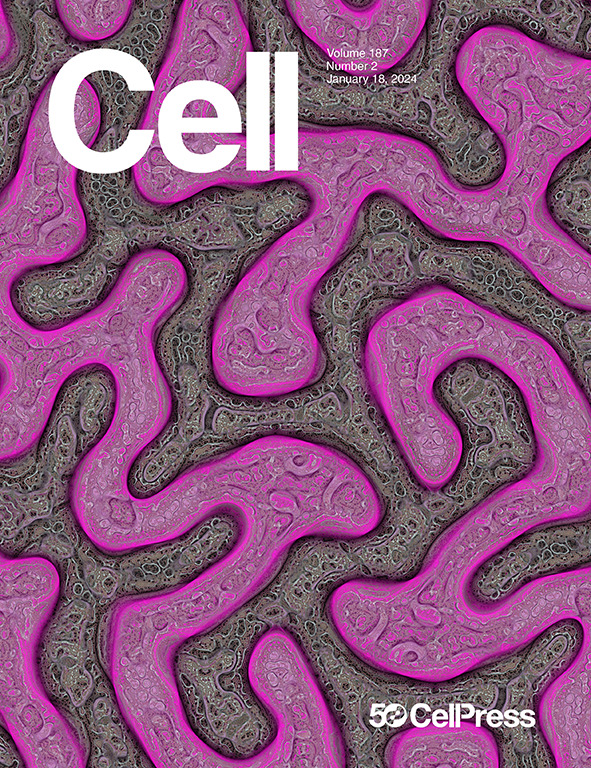Repeat-element RNAs integrate a neuronal growth circuit
IF 45.5
1区 生物学
Q1 BIOCHEMISTRY & MOLECULAR BIOLOGY
引用次数: 0
Abstract
Neuronal growth and regeneration are regulated by local translation of mRNAs in axons. We examined RNA polyadenylation changes upon sensory neuron injury and found upregulation of a subset of polyadenylated B2-SINE repeat elements, hereby termed GI-SINEs (growth-inducing B2-SINEs). GI-SINEs are induced from ATF3 and other AP-1 promoter-associated extragenic loci in injured sensory neurons but are not upregulated in lesioned retinal ganglion neurons. Exogenous GI-SINE expression elicited axonal growth in injured sensory, retinal, and corticospinal tract neurons. GI-SINEs interact with ribosomal proteins and nucleolin, an axon-growth-regulating RNA-binding protein, to regulate translation in neuronal cytoplasm. Finally, antisense oligos against GI-SINEs perturb sensory neuron outgrowth and nucleolin-ribosome interactions. Thus, a specific subfamily of transposable elements is integral to a physiological circuit linking AP-1 transcription with localized RNA translation.

重复元件rna整合神经元生长回路
神经元的生长和再生受轴突mrna的局部翻译调控。我们检查了感觉神经元损伤时RNA多腺苷化的变化,发现多腺苷化b2 - sin重复元件的一个子集上调,因此称为gi - sin(生长诱导b2 - sin)。gi - sin是由受损感觉神经元中ATF3和其他AP-1启动子相关的外基因位点诱导的,但在受损视网膜神经节神经元中不上调。外源性GI-SINE表达引起损伤的感觉、视网膜和皮质脊髓束神经元的轴突生长。gi - sin与核糖体蛋白和核蛋白(一种轴突生长调节rna结合蛋白)相互作用,调节神经元细胞质中的翻译。最后,针对gi - sine的反义寡核苷酸会干扰感觉神经元的生长和核蛋白-核糖体的相互作用。因此,一个特定的转座因子亚家族是连接AP-1转录与局部RNA翻译的生理回路的组成部分。
本文章由计算机程序翻译,如有差异,请以英文原文为准。
求助全文
约1分钟内获得全文
求助全文
来源期刊

Cell
生物-生化与分子生物学
CiteScore
110.00
自引率
0.80%
发文量
396
审稿时长
2 months
期刊介绍:
Cells is an international, peer-reviewed, open access journal that focuses on cell biology, molecular biology, and biophysics. It is affiliated with several societies, including the Spanish Society for Biochemistry and Molecular Biology (SEBBM), Nordic Autophagy Society (NAS), Spanish Society of Hematology and Hemotherapy (SEHH), and Society for Regenerative Medicine (Russian Federation) (RPO).
The journal publishes research findings of significant importance in various areas of experimental biology, such as cell biology, molecular biology, neuroscience, immunology, virology, microbiology, cancer, human genetics, systems biology, signaling, and disease mechanisms and therapeutics. The primary criterion for considering papers is whether the results contribute to significant conceptual advances or raise thought-provoking questions and hypotheses related to interesting and important biological inquiries.
In addition to primary research articles presented in four formats, Cells also features review and opinion articles in its "leading edge" section, discussing recent research advancements and topics of interest to its wide readership.
 求助内容:
求助内容: 应助结果提醒方式:
应助结果提醒方式:


